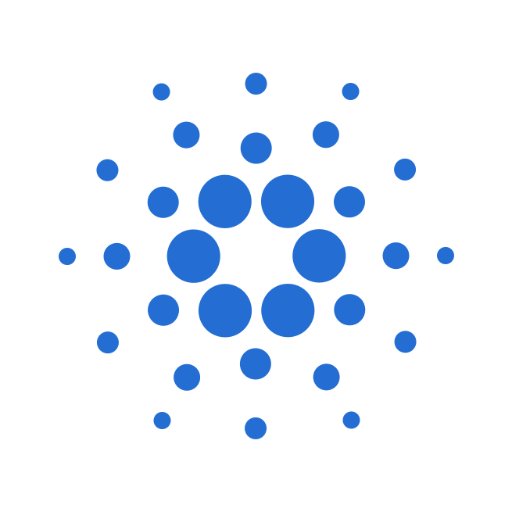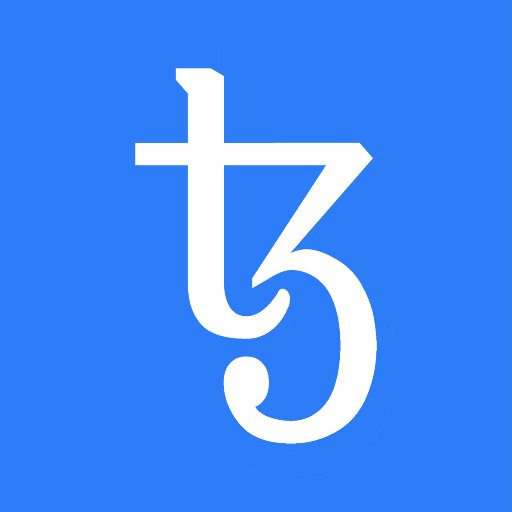Comparar Cardano (ADA) vs Tezos (XTZ) Coin
Like never before, the world of cryptocurrency is witnessing a rising tide of competition playing out in various dimensions, especially between Cardano (ADA) and Tezos (XTZ). This article will delve into a comprehensive comparison between these two dominant forces in the digital currency universe, focusing on their primary attributes, technological edge, and trade-offs. Our aim is to arm prospective investors and technology enthusiasts with balanced insight for a more informed decision.
User rating
Cryptogeek rating
Puntaje de confianza
¿Cómo funciona?
Sobre
|
La moneda Cardano (ADA) es una criptomoneda lanzada en 2017. La moneda se basa en la red Cardano. El líder del equipo de desarrollo es Charles Hoskinson, un desarrollador experimentado que trabajó para Ethereum y BitShares antes del lanzamiento de Cardano. Cardano es la primera criptomoneda en utilizar código de código abierto revisado académicamente por pares, lo que hace que este proyecto sea bastante único. El algoritmo de consenso de Cardano es Prueba de participación. Cardano suele ser elogiado por su alto nivel de seguridad y sus transacciones rápidas. La moneda Cardano rápidamente ganó valor y se convirtió en una de las 10 principales criptomonedas por capitalización de mercado.
|
Tezos es una plataforma de contrato inteligente con su propia cadena de bloques y un token nativo (Tezos, XTZ). La gobernanza se realiza mediante el algoritmo de prueba de participación. Significa que los interesados (aquellos que poseen al menos 10,000 XTZ) votan por cambios en el protocolo. Estos validadores ("panaderos") obtienen recompensas por el desempeño de la validación. Las recompensas se generan a través de la inflación. Los que delegan su XTZ a los panaderos también pueden ganar. Tezos tiene un mecanismo incorporado de "auto-enmienda" que permite dar forma a la red sin tener que hacer bifurcaciones. Mantiene a la comunidad unida y facilita el proceso de desarrollo.
|
Tipo
Fecha de creación
País
Idiomas
Equipo
Protocolo
|
Public blockchain
|
Public blockchain
|
Precio actual (USD)
Punto más alto (USD)
Intercambiar en el precio (24h)
Volumen (24h)
|
35118735.24203
|
3496159.62939
|
Hashrate
Suministros máximos
|
45000000000.00000
|
Sin datos
|
Suministro total
Suministros circulantes
|
45000000000.00000
|
1077328970.62860
|
Velocidad de transacción / Tiempo de Bloque
Comisión de transacción
Rentabilidad minera
Algoritmo
Tipo de prueba
Totalmente preminado
Dirección de contrato inteligente
Total de monedas extraídas
|
25927070538.00000
|
810904882.00580
|
Es el comercio
Recompensa de bloque
|
0.000000000000
|
0.000000000000
|
Tiempo de bloque
| Sobre |
La moneda Cardano (ADA) es una criptomoneda lanzada en 2017. La moneda se basa en la red Cardano. El líder del equipo de desarrollo es Charles Hoskinson, un desarrollador experimentado que trabajó para Ethereum y BitShares antes del lanzamiento de Cardano. Cardano es la primera criptomoneda en utilizar código de código abierto revisado académicamente por pares, lo que hace que este proyecto sea bastante único. El algoritmo de consenso de Cardano es Prueba de participación. Cardano suele ser elogiado por su alto nivel de seguridad y sus transacciones rápidas. La moneda Cardano rápidamente ganó valor y se convirtió en una de las 10 principales criptomonedas por capitalización de mercado.
|
Tezos es una plataforma de contrato inteligente con su propia cadena de bloques y un token nativo (Tezos, XTZ). La gobernanza se realiza mediante el algoritmo de prueba de participación. Significa que los interesados (aquellos que poseen al menos 10,000 XTZ) votan por cambios en el protocolo. Estos validadores ("panaderos") obtienen recompensas por el desempeño de la validación. Las recompensas se generan a través de la inflación. Los que delegan su XTZ a los panaderos también pueden ganar. Tezos tiene un mecanismo incorporado de "auto-enmienda" que permite dar forma a la red sin tener que hacer bifurcaciones. Mantiene a la comunidad unida y facilita el proceso de desarrollo.
|
| Tipo |
Tipo
coin
|
Tipo
coin
|
| Fecha de creación |
Fecha de creación
2017
|
Fecha de creación
2016
|
| País |
País
International
|
País
USA
|
| Idiomas |
Idiomas
Sin datos
|
Idiomas
Sin datos
|
| Equipo |
Equipo
Public
|
Equipo
Public
|
| Protocolo |
Protocolo
Public blockchain
|
Protocolo
Public blockchain
|
| Precio actual (USD) |
Precio actual (USD)
0.8062
|
Precio actual (USD)
0.7077
|
| Punto más alto (USD) |
Punto más alto (USD)
1.3300
|
Punto más alto (USD)
4.4600
|
| Intercambiar en el precio (24h) |
Intercambiar en el precio (24h)
-3.55
|
Intercambiar en el precio (24h)
-2.97
|
| Volumen (24h) |
Volumen (24h)
35118735.24203
|
Volumen (24h)
3496159.62939
|
| Hashrate |
Hashrate
Sin datos
|
Hashrate
Sin datos
|
| Suministros máximos |
Suministros máximos
45000000000.00000
|
Suministros máximos
Sin datos
|
| Suministro total |
Suministro total
Sin datos
|
Suministro total
Sin datos
|
| Suministros circulantes |
Suministros circulantes
45000000000.00000
|
Suministros circulantes
1077328970.62860
|
| Velocidad de transacción / Tiempo de Bloque |
Velocidad de transacción / Tiempo de Bloque
50
|
Velocidad de transacción / Tiempo de Bloque
15
|
| Comisión de transacción |
Comisión de transacción
Sin datos
|
Comisión de transacción
Sin datos
|
| Rentabilidad minera |
Rentabilidad minera
high
|
Rentabilidad minera
medium
|
| Algoritmo |
Algoritmo
Ouroboros
|
Algoritmo
Sin datos
|
| Tipo de prueba |
Tipo de prueba
PoS
|
Tipo de prueba
DPoS
|
| Totalmente preminado |
Totalmente preminado
Sin datos
|
Totalmente preminado
Sin datos
|
| Dirección de contrato inteligente |
Dirección de contrato inteligente
Sin datos
|
Dirección de contrato inteligente
Sin datos
|
| Total de monedas extraídas |
Total de monedas extraídas
25927070538.00000
|
Total de monedas extraídas
810904882.00580
|
| Es el comercio |
Es el comercio
yes
|
Es el comercio
yes
|
| Recompensa de bloque |
Recompensa de bloque
0.000000000000
|
Recompensa de bloque
0.000000000000
|
| Tiempo de bloque |
Tiempo de bloque
Sin datos
|
Tiempo de bloque
Sin datos
|
Social
Sitio web
Twitter
Ventajas
|
Friendly
Peer-reviewed technology
Scalable
|
Has impressive on-chain governance
Self-amending blockchain
Secure smart contract programming language
|
Desventajas
|
Competitors in the same space
Still in development
Multiple chains
|
ICO was followed by delays
Young ledger
High-risk investment
|
Clasificación
| User rating |
User rating
4.3 / 5
7 reseñas de los usuarios
|
User rating
4.5 / 5
4 reseñas de los usuarios
|
| Cryptogeek rating |
Cryptogeek rating
3.8 / 5
|
Cryptogeek rating
3.4 / 5
|
| Ventajas |
Ventajas
Friendly
Peer-reviewed technology
Scalable
|
Ventajas
Has impressive on-chain governance
Self-amending blockchain
Secure smart contract programming language
|
| Desventajas |
Desventajas
Competitors in the same space
Still in development
Multiple chains
|
Desventajas
ICO was followed by delays
Young ledger
High-risk investment
|
La calificación de Cardano (ADA) es 4.3, basada en 7 opiniones de usuarios. La calificación de los usuarios de Tezos (XTZ) es 4.5, basada en 4 opiniones de los usuarios.
We also calculate the special Cryptogeek TrustScore based on the characteristics of each coin.
Elija otras empresas
In conclusion, there's no definitive verdict on whether Cardano (ADA) or Tezos (XTZ) is superior as both digital currencies present distinct virtues and have their unique areas of expertise. The choice between them largely depends on the individual investor's goals, risk appetite and perspective on their future developments. Hence, understanding the nuances, as laid out in this comparison, forms the bedrock of a more informed investment decision. Stay updated, stay invested, and stay informed!
Like never before, the world of cryptocurrency is witnessing a rising tide of competition playing out in various dimensions, especially between Cardano (ADA) and Tezos (XTZ). This article will delve into a comprehensive comparison between these two dominant forces in the digital currency universe, focusing on their primary attributes, technological edge, and trade-offs. Our aim is to arm prospective investors and technology enthusiasts with balanced insight for a more informed decision.

